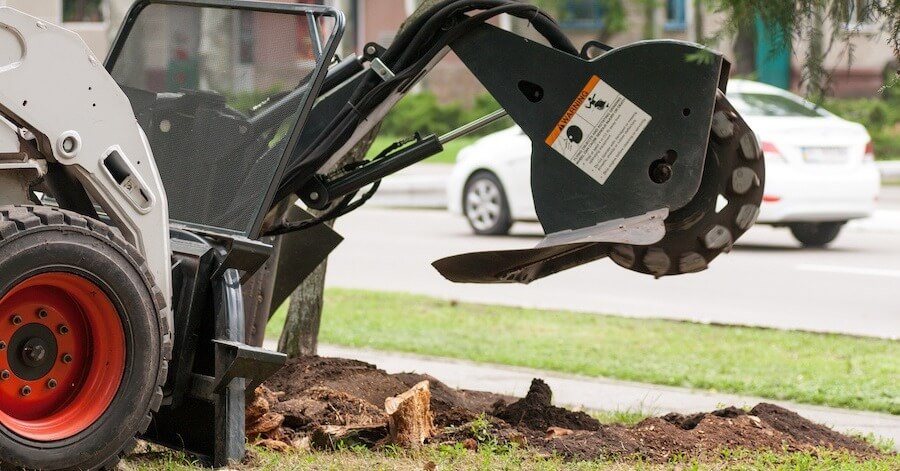Planting a tree is an investment in the future. Watching a tiny sapling grow into a towering tree is a rewarding experience, but it requires patience. Many factors influence the growth rate of trees, and understanding them is crucial for anyone considering planting trees on their property. This article will explore the key elements determining how long a tree takes to grow, from location and species to maintenance.
Location Matters
One of the primary factors influencing a tree's growth rate is its location. Climate, soil type, and local weather conditions all play significant roles. Trees thrive in environments that mimic their native habitats.
For example, a tree that naturally grows in a tropical climate may struggle in colder regions. Understanding your local climate and soil conditions is essential for choosing the suitable tree species and ensuring its successful growth.
Trees in warmer climates generally grow faster due to the extended growing seasons. However, extreme heat can also be detrimental to certain species. Conversely, trees in colder climates might have a slower growth rate but have adapted to withstand harsher conditions.
The Role of Tree Species
Different tree species have varying growth rates. Some trees are known for their rapid growth, while others take decades to reach maturity. Deciduous trees like maple and oak typically grow slower than coniferous trees like pine and spruce. However, deciduous trees often live longer.
Consider the ultimate size of the tree when selecting a species. Faster-growing trees might provide quicker results but can become unwieldy if not correctly managed. On the other hand, slow-growing trees require less maintenance but take longer to fulfill their aesthetic or functional purposes.
| Tree Species | Growth Rate (Yearly) | Final Height (ft) |
| Oak (Quercus) | 1-2 feet | 50-100 |
| Maple (Acer) | 1-2 feet | 40-75 |
| Pine (Pinus) | 1-3 feet | 50-100 |
| Spruce (Picea) | 1-2 feet | 40-60 |
| Fir (Abies) | 1-2 feet | 30-60 |
| Redwood (Sequoia) | 2-3 feet | 200-300 |
| Birch (Betula) | 1-2 feet | 40-70 |
| Dogwood (Cornus) | 1 foot | 15-30 |
| Beech (Fagus) | 1-2 feet | 50-80 |
| Willow (Salix) | 2-3 feet | 30-50 |
| Cedar (Cedrus) | 1-2 feet | 40-50 |
| Poplar (Populus) | 3-4 feet | 40-70 |
| Hemlock (Tsuga) | 1-2 feet | 40-70 |
| Cherry (Prunus) | 1-2 feet | 30-60 |
| Sycamore (Platanus) | 2-3 feet | 70-100 |
| Eucalyptus (Eucalyptus) | 3-5 feet | 40-60 |
| Ginkgo (Ginkgo) | 1-2 feet | 50-80 |
| Red Maple (Acer rubrum) | 1-2 feet | 40-60 |
| Palms (Arecaceae) | variable | variable |
Maintenance: Nurturing Your Tree
While nature plays a significant role in a tree's growth, proper maintenance is equally crucial. Regular care ensures the tree receives the nutrients, water, and sunlight it needs to thrive. Here are some tips for nurturing your tree:
1. Watering:
Adequate water is essential for a tree's growth. Young trees, especially, need consistent watering. Deep watering encourages the development of deep root systems, making the tree more resilient to drought conditions. However, overwatering can lead to root rot, so finding the right balance is vital.
2. Fertilization:
Fertilizing your tree provides essential nutrients that may be lacking in the soil. The type and frequency of fertilization depend on the tree species and local soil conditions. Consulting with arborists or tree care professionals, like Strobert Tree Services, can help you develop a proper fertilization plan.
3. Pruning:
Pruning is essential for shaping the tree and promoting healthy growth. Removing dead or diseased branches allows the tree to allocate resources more efficiently. However, improper pruning can harm the tree, so seeking professional assistance is advisable.
4. Protection:
Young trees are vulnerable to damage from pests, animals, and harsh weather conditions. Using tree guards, applying pest control measures, and providing support during storms can protect your tree during its early stages of growth.
5. Professional Services:
Hiring professional tree services like Strobert Tree Services ensures your tree receives expert care. These services can assess your tree's specific needs, diagnose potential issues, and provide solutions to promote healthy growth.
Contact Strobert Tree Services
If you're considering planting trees or need assistance with the care of existing ones, contact Strobert Tree Services. As leaders in tree care serving Delaware, Pennsylvania, Maryland, and New Jersey, they bring expertise and dedication to every project. Whether it's tree planting, pruning, or emergency tree removal, Strobert Tree Services is committed to the health and longevity of your trees.
The time it takes for a tree to grow depends on various factors, including location, species, and maintenance efforts. By understanding these elements and providing proper care, you can enjoy the beauty and benefits of a flourishing tree on your property for years to come.











